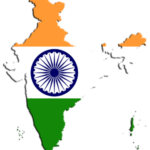Food assistance programs provided by the government play a crucial role in addressing hunger and ensuring food security among the vulnerable population. Food assistance programs aim to improve the health and well-being of the beneficiaries and reduce hunger and poverty. These programs aim to provide access to nutritious and affordable food for individuals and families who struggle to meet their nutritional needs.
One such program is the Antyodaya Anna Yojana (AAY), launched in December 2000. It provides food grains at a highly subsidized rate to poor families under the Targeted Public Distribution System (TPDS). The scale of the issue was initially 25 kg per family per month, which was increased to 35 kg per family per month from April 1, 2002. The National School Lunch Program (NSLP) is a federally funded program that provides free or reduced-price meals to children in low-income schools.
The program aims to ensure that no child goes hungry during their school day and encourages healthy eating habits. For moms and young children, there’s the Special Supplemental Nutrition Program for Women, Infants, and Children (WIC). This program provides vouchers for milk, fruits, vegetables, and other essential foods crucial for moms and babies during crucial growth periods. Think of it as a special shopping list to ensure little ones get the nourishment they need for healthy development.
Another vital program is the National School Lunch Program (NSLP), which operates in schools across the country. It provides free or reduced-price lunches to students from low-income families, ensuring that children receive nutritious meals during the school day. This initiative not only supports the health and development of students but also helps alleviate the financial burden on struggling families. Another important program is the Pradhan Mantri Gram Sadak Yojana (PMGSY), launched in December 2000. This program aims to provide rural connectivity to unconnected habitations with a population of 500 persons or more in rural areas.
The Emergency Food Assistance Program (TEFAP) is a temporary food assistance program that helps feed low-income individuals and families during times of crisis or natural disasters. Through this program, surplus foods from the U.S. Department of Agriculture are distributed to food banks and pantries, which are then distributed to people in need. The Commodity Supplemental Food Program (CSFP) is a program that distributes USDA-donated food to low-income elderly individuals. The CSFP provides nutritious food to supplement the diets of eligible seniors, helping them meet their nutritional needs and promoting overall health and well-being.
The Food Distribution Program on Non-Tribal Indian Reservations (FDPN) is a program that provides food assistance to eligible Native American households not on Indian reservations. The program is similar to the FDPIR, with the only difference being that it serves households not on reservations. These food assistance programs provided by the government play a crucial role in addressing hunger and promoting food security among vulnerable populations. By providing nutritious meals and supporting healthy eating habits, these programs contribute to the overall well-being and vitality of communities.
In conclusion, Food Assistance Programs have been revolutionized by the advent of the Digital Seva Portal. This platform, along with the CSC registration process, has made these programs more accessible and efficient. Digital Seva has bridged the gap between the government and citizens, ensuring that food assistance reaches those who need it most, thereby playing a crucial role in combating hunger and promoting food security in India.


